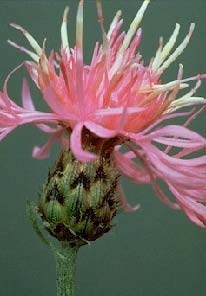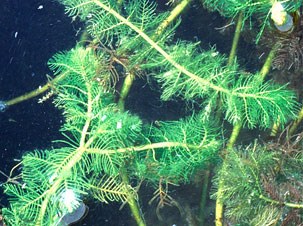
An Environmental Challenge
Exotic SpeciesPlants are everywhere we live, work, and recreate. They tell stories of adaptation ranging from environmental stress to human occupations. These act as a road map to understand plant density and growth patterns. Lake Roosevelt is located in a semi-arid transition zone. Plant communities along the 150 mile-long reservoir gradually change from shrub steppe communities to ponderosa pine forest. The actual reservoir has its own unique aquatic plant species in addition to riparian vegetation along its margins. Although there are three distinct plant communities, the last 100 years of human occupation has added to, and in some case replaced, portions of these communities. Invasive species are defined as a those that are non-native (or alien) to the ecosystem and whose introduction causes, or is likely to cause, economic or environmental harm or harm to human health. Sometimes these invasive plants were introduced by accident. The most common is the spread of invasive plants along roadways and bodies of water.
Please contact us if you find invasive plant populations or have question or concerns about invasive plants.
PollutionIn the early 1980s, concerns about water quality in Lake Roosevelt were first reported in a U.S. Fish and Wildlife study that reported elevated concentrations of arsenic, cadmium, lead, and zinc in fish. Follow-up studies identified the primary source of the contamination to be a lead-zinc smelter owned by Teck Cominco, a Canadian company with U.S. subsidiaries, on the Columbia River in British Columbia just upstream from the international boundary. Since the 1950s, the smelter had discharged several hundred tons of furnace slag and effluent per day into the Columbia River.
In June 2006, EPA released beach sediment data from samples that were collected from 15 beaches at Lake Roosevelt. In the spring of 2005, nine developed beaches within the recreation area were sampled, three beaches on the Colville and Spokane Reservations were sampled, and three beaches north of the recreation area were sampled.
All 15 samples taken within the recreation area and reservations tested within acceptable health based risk standards for short-term recreational users (i.e. 14 consecutive days on one beach in the summer). The three beaches north of the recreation area had slightly elevated levels of arsenic and one of those beaches had slightly elevated levels of lead. These three beaches will be further evaluated by EPA as their study of the Upper Columbia progresses.
Fish tissue analysis is ongoing and initial results expected be released in the summer of 2007. Changing Lake LevelsAnother challenge to managing the recreation area is the constantly fluctuating water levels. This constant shift between lake and dry land makes the preservation of natural and cultural resources difficult. The lake level varies depending on inflow from rain and snow pack and outflow from the dam. The elevation of the surface of Lake Roosevelt is measured from sea level. An elevation of 1290’ is considered “full pool,” however fluctuating water levels have gone as low as 1208’. Low lake levels leave boat ramps high and dry, and also expose a great deal of previously inundated land.
A host of native plants colonize the riparian areas along the lake. The area around 1290’ is dominated by Phalaris arundinaceae (reed canarygrass). It occupies most of the area within a few feet in elevation of the annual high water line. There are extensive stands of this grass in large shallow bays (ex. near Kettle Falls Campground) and shoreline marshes (Ex. down from Napoleon Bridge). Other less abundant species occupy this zone as well, Coreopsis atkinsonii (Tickseed), Carex lenticularis (Sedge), Alopecuris aequalis (Shortawn foxtail) have been found and other species would be expected to be found by a more thorough survey.
In the areas that are submerged for the majority of the summer, aquatic plants are dominant. These plants are generally less coarse than the grasses and sedges at the full pool level and therefore may be more heavily grazed by waterfowl. Various species of pondweed (Potamogeton) are abundant, with Eurasian water milfoil (Miriophyllum aquaticum) common in certain areas. During the spring drawdown, various annuals can be found among the pondweed on the exposed lakebed. Plagiobothrys (Popcornflower) and diminutive annuals in the mustard family have been observed but not positively identified. 
under water plant species. |
Last updated: April 3, 2023
